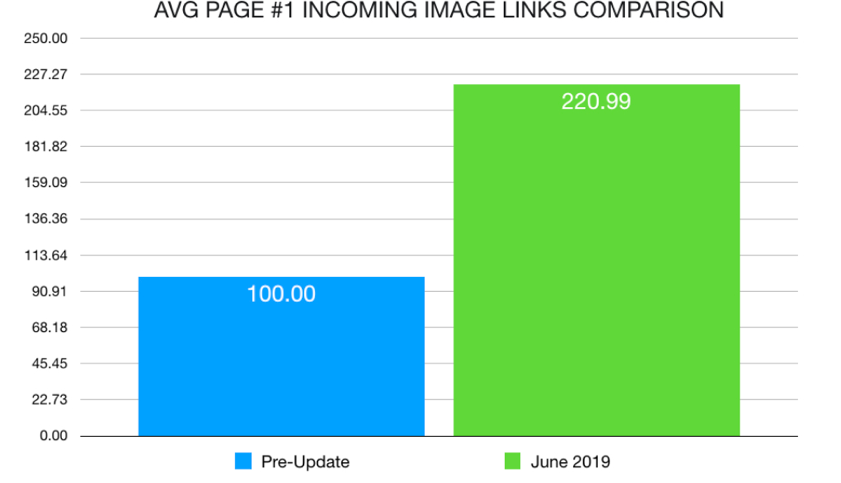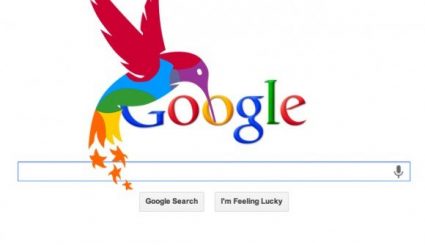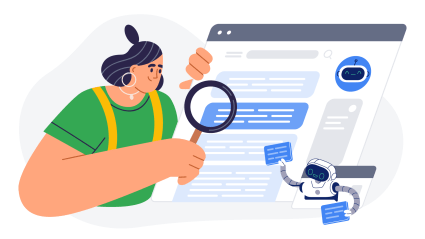Google’s June Core Algorithm Update
In June 2019, Google rolled out another core algorithm update. Since Google does not directly state what changed in the update, the SEO community analyzes data points to try to identify patterns from the changes. Traffic Research performed a study on over 2+ million pages, observing some interesting data points.
The update seems to align Google’s focus on metrics that affect entire domains, including subdomains, rather than user experience, on-page content, layout or quantity of ads.
The study determined that there was a positive change related to links and domain authority. This update emphasized more than just raw links but instead focused on links that are conveying authority and trust. “Starting with the backlinks, we can clearly see that the results on the first page of Google have significantly more links post-June 2019… Results on page 1 have 32% more raw backlinks after the update.”
Traffic Research also noticed that the average page 1 domain contains more do follow and no follow links, as well as external and internal links than page 1 results had prior to the update.
Further, images links saw a large change. Average Page #1 results saw a “major upshift (over 120%) in sites with incoming image links.”
Why Does This Matter? Google is continuing to refine the way they measure E-A-T, and ultimately, Google is looking for the most reputable and trusted sites. If your site wasn’t negatively impacted by the June core algorithm update, that is great news! But, that it doesn’t mean you are off the hook. A link building strategy is increasingly important. And not just any links, but authoritative and trustworthy links. Creating an established backlink profile can be a big undertaking, but it is necessary.

Traffic Resource
Google My Business: Making Your Business Stand Out
On June 20, 2019 Google announced that they would be rolling out new features to allow business owners to make their profiles unique.
Some of the new features include:
- Welcome Offers: Businesses can reward customers who follow their business.
- Short Names & URLs: Businesses can claim a short name and easily refer customers back to their profile.
- Logo Feature: Businesses who have completed the core profile features will have an additional branding opportunity with their logo displayed on the top-right of their profile.
- Dynamic Photo Module: Businesses will have a photo display that will show photos instantly.
Further, Google announced that starting later this summer they will be “…highlighting the top five percent of businesses in a particular category with the “Local Favorite” designation. To help people easily find and engage with these businesses, we’re also creating digital and physical badges of honors.”
Why Does This Matter? Having a unique and descriptive GMB profile helps bring in new customers. Google’s added features allow businesses different avenues to try to stand out from competitors and ultimately win over the customers. Businesses should take full advantage of the GMB features and keep it updated and complete.
Robots Exclusion Protocol: Internet Standard
On July 1, 2019, Google announced that they are making the Robots Exclusion Protocol (REP) an internet standard and as part of becoming a standard, Google has open-sourced their robots.txt parser and matcher as a C++ library.
As they roll out REP as the internet standard, rules that are not part of the standard will not be supported by Google starting September 1, 2019.
“In the interest of maintaining a healthy ecosystem and preparing for potential future open source releases, we’re retiring all code that handles unsupported and unpublished rules (such as noindex) on September 1, 2019.”
Some examples are noindex, no follow and crawl-delay directives.
Why Does This Matter? If you are currently utilizing any of these unsupported methods in your robots.txt, it is important to seek out alternative options and have these in place before September 1.







Responses